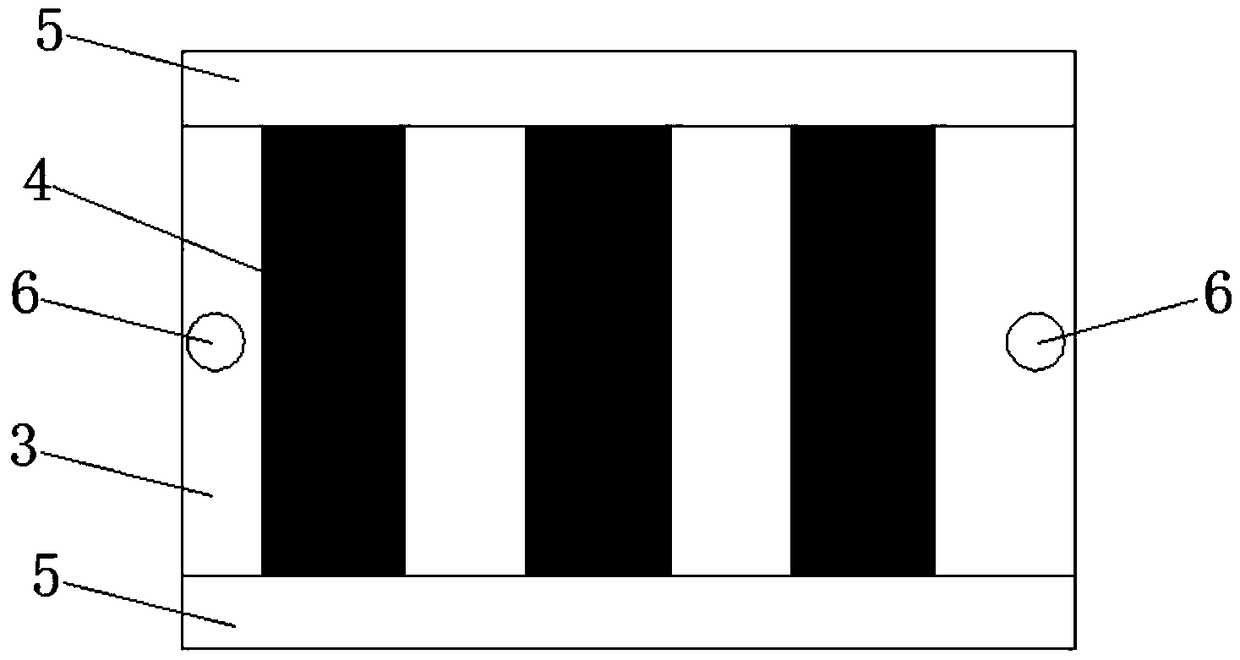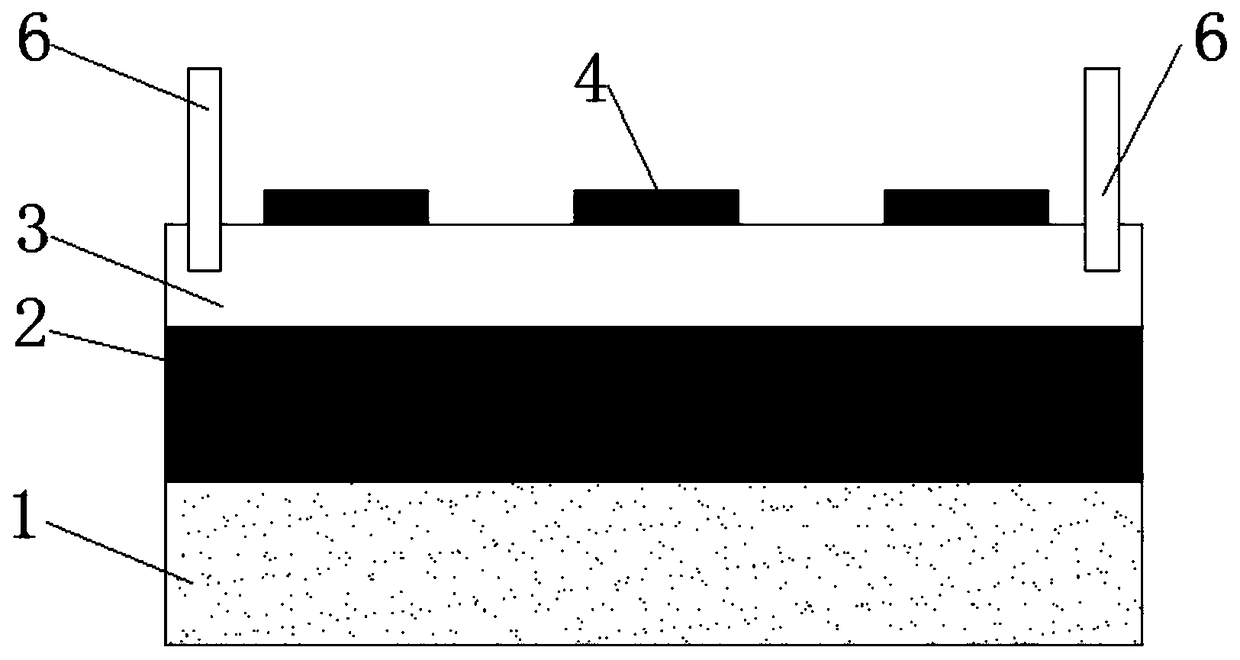A Hall sensor capable of detecting intensity of incident light
A Hall sensor and incident light technology, applied in the field of space optics, can solve the problem that Hall sensors cannot perform light detection, etc., and achieve the effect of simple structure and high sensitivity
- Summary
- Abstract
- Description
- Claims
- Application Information
AI Technical Summary
Problems solved by technology
Method used
Image
Examples
Embodiment 1
[0023] In order to overcome the problem that the existing Hall sensor cannot perform light detection. The present invention provides a figure 1 , figure 2 The shown Hall sensor that can detect the intensity of incident light includes a substrate layer 1, a metal layer 2 disposed above the substrate layer 1, a light-transmitting conductive layer 3 disposed above the metal layer 2, and the light-transmitting conductive layer 3 There are also a plurality of metal strips 4 arranged in parallel on the top, so that a Fabry-Perot cavity is formed between the metal strips 4 and the metal layer 2, and the Fabry-Perot cavity is filled with light-transmitting Conductive layer 3, so that resonance can be formed to change the effective refractive index of incident light; electrodes 6 are arranged on the left and right sides of the light-transmitting conductive layer 3, so that voltage can be applied to the light-transmitting conductive layer 3, which can be adjusted by loading different ...
PUM
 Login to View More
Login to View More Abstract
Description
Claims
Application Information
 Login to View More
Login to View More - R&D
- Intellectual Property
- Life Sciences
- Materials
- Tech Scout
- Unparalleled Data Quality
- Higher Quality Content
- 60% Fewer Hallucinations
Browse by: Latest US Patents, China's latest patents, Technical Efficacy Thesaurus, Application Domain, Technology Topic, Popular Technical Reports.
© 2025 PatSnap. All rights reserved.Legal|Privacy policy|Modern Slavery Act Transparency Statement|Sitemap|About US| Contact US: help@patsnap.com



